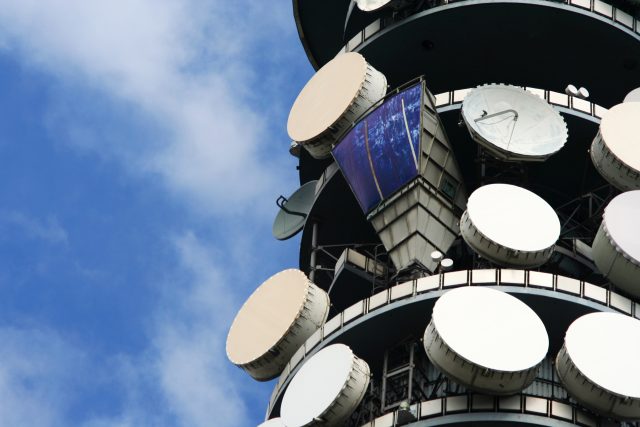With the ink dry on a £275m deal to sell the London landmark to a US-based hotel chain, Eloise Feilden takes a look back at the BT Tower’s revolving restaurant and cocktail bar to consider what could be in store for future guests.

Announced last week, BT has inked a £275m deal to sell the building to US-based hotel chain MCR, the third-largest hotel owner in the US.
Like many, the first question on our lips was whether the sale would see the return of the landmark’s iconic revolving restaurant. Opened on 19 May 1966 by then postmaster general Anthony Wedgwood Benn, the restaurant was operated, somewhat surprisingly, by resort chain Butlins.
Situated on the 34th floor, the restaurant was witness to many iconic moments before its closure in 1981.
At 520ft high, inn its early days the venue served stars including The Rolling Stones’ Mick Jagger, members of The Beatles and boxer Mohammed Ali.
On October 31 1971 the Top of the Tower restaurant was the site of a terror attack, when a bomb went off in the men’s toilet. No one was harmed by the explosion, though the damage was extensive. Both the Provisional IRA and the Angry Brigade group of far-left terrorists claimed responsibility for the attack.
The BT Tower revolving restaurant was never the same after that. It was closed to the general public for security reasons a few months after the bombing and operated on an invitation-only basis. Public access to the building ended altogether in 1981.

Since then, the revolving restaurant was reopened for one night in 2015. In 2018, four guests were given a one-off chance to glamp on the skyscraper’s 34th floor. Former BT bosses have considered re-opening the restaurant, but this has always been vetoed owing to security concerns.
Now under new management, and set to be the site of a luxury hotel, the drinks business reached out to MCR for information about bar and restaurant plans for the site, but the company said it was too early to share any details.
Many hope that MCR will be able to return the revolving restaurant to its former 1960s glory.
Turning slowly at the rate of one revolution every 23 minutes, the Top of the Tower restaurant was reached by passenger lifts that travelled at more than 300 metres a minute (12 mph).
In 1966 the then tallest building in Britain was also home to a cocktail bar immediately above the restaurant, with kitchens above.
Twenty chefs — a third of them French, a third Italian, and the head chef Spanish — served 800 lunches and 1,300 dinners each week, according to Look at Life’s Eating High documentary from 1966.
Butlins paid £20,000 in rent each year, the equivalent to more than £300,000 today. The post office was also entitled to 11.5% of every bill, plus a four shillings charge for each customer’s ride in the lift
Wines served in the restaurant had to be kept in the tower basement, which is also the main food store. Daily supplies were airlifted to the kitchen before 9am each morning, after which time the lifts were occupied with Post Office business.
Designed in the shape of a ring, the kitchen transported food down two floors to the restaurant via high-speed lifts, and the menu included smoked eel, caviar, Lobster Thermidor.
Open seven days a week, the iconic revolving venue closed only on Christmas day.
This article originally appeared on the drinks business.




